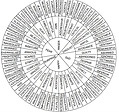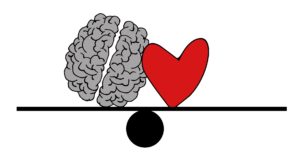 –by Hilary Jacobs Hendel, originally published on the author’s blog, May 17, 2016
Manager’s note: I’ve lately been in a particularly tough and sometimes dark place as a trauma mama, partly with my kids’ stuff, partly with my own. I don’t know if I’ll be able to get my kids to try this, but it sure helped me!
–by Hilary Jacobs Hendel, originally published on the author’s blog, May 17, 2016
Manager’s note: I’ve lately been in a particularly tough and sometimes dark place as a trauma mama, partly with my kids’ stuff, partly with my own. I don’t know if I’ll be able to get my kids to try this, but it sure helped me!
Maintaining a connection to both our thoughts and emotions is required for optimal wellbeing. One of my greatest joys is to help people restore contact with their emotions even after years of them being buried. To touch our true emotions is to feel real.
Sadly, many of us have learned to protect ourselves by blocking access to our emotions. We do this with defenses, the protective armor we wear to avoid feelings. Our thoughts and our defenses are sometimes the same. Thinking moves us away from our deepest emotional truths.
I do not suggest that we stop thinking. Quite the contrary. I love thinking and I enjoy my thoughts. Plus, spending all day living in vulnerable and emotional states is not practical. Not at all! We need to think and perform at our jobs and we need healthy defenses to move away from emotions at times.
Most of us, however, only pay attention to our thoughts. We can absolutely build flexibility to more freely  glide from thoughts to emotions and back.
glide from thoughts to emotions and back.
One way we can achieve more balance between our thoughts and feelings is to pay some attention to what we feel in our bodies, the place where our core emotions reside.
Want to experiment with building mental flexibility?
Let’s move from the head to the heart and back again with this quick and simple taste of what I mean:
Focus on your thoughts. What are you thinking right now? Can you answer out loud or in your head as if you are talking to me?
Maybe you are thinking, “This blog is intriguing.” Maybe you are thinking, “This stuff is silly.” Maybe you are thinking about what you will eat for dinner tonight. Just notice without passing judgment on your thoughts. The goal is just to notice. It’s that simple.
Right now, for example, I am thinking, “I hope people like this blog and that my communications are clear and understandable.”
Now you try. What are you thinking?
Next…let’s move down below your neck to the area around your heart.
Focus on your heart area right now for about 10 seconds. Just stay right there noticing. (Make sure you are not holding your breath as that stops us from being able to sense what we feel.)
Can you describe either an emotion or physical sensation? You might sense that you are calm, relaxed, tensed, stressed, warm, cold, happy, sad, angry, scared, excited, bubbly, numb, or fluttery. These are just a few of the many words that describe emotions and physical sensations.
Try to put your own language on what you sense around your heart. If you feel stuck, that’s normal. Click here for lists of words that describe physical sensations and emotions. These will help find the words that fit what you notice. As for me, I notice a little flutter in my heart and my stomach which tells me I’m a bit nervous to post this (but I’m going to be brave and post it any way.)
Finally, shift back to your head. Focus on your thoughts again. Ask yourself, “What did I think of this exercise?” Notice what you are thinking.
Now shift back down again to your heart area and sense what you are experiencing now. Don’t assume what you sensed before is what you sense now. Use the charts again to put more nuanced language on your emotional experience.
Did you notice the difference between thinking your thoughts and sensing your body?
Congratulations! You’ve just practiced moving from your thoughts to your feelings and back again.
Well done! EXCITING NEWS! Hilary’s book, It’s Not Always Depression (Random House, Feb. 2018), is now available for pre-order at http://www.
EXCITING NEWS! Hilary’s book, It’s Not Always Depression (Random House, Feb. 2018), is now available for pre-order at http://www.
